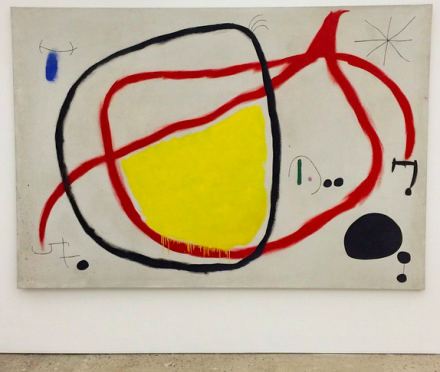
Joan Miró, Bird in the Night (1967), via Art Observed
Joan Miró’s impact on the landscape of twentieth century art can hardly be ignored, an artist whose fluid, lithe figurations and adventurous approach to both color and line helped to pave an alternative to the dense cubism of his fellow countryman and friend Pablo Picasso. Taking a reflective look at the artist’s contributions and continued artistic growth during his late Nahmad Contemporary is currently presenting Oiseaux dans L’Espace, a minimal, yet stunning show that reflects an impressive curatorial vision towards the artist’s later works.
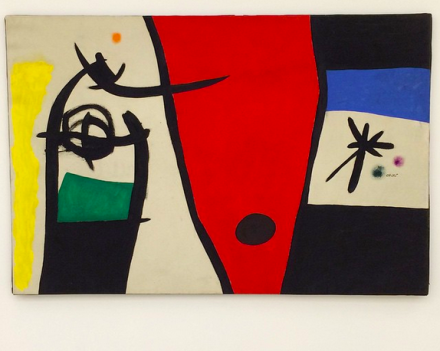
Joan Miró, Woman with the Voice of a Nightingale in the Night (1971), via Art Observed
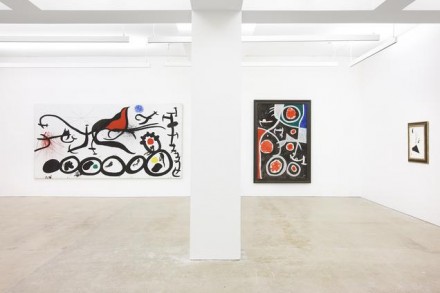
Joan Miró, Oiseaux dans L’Espace (Installation View), via Nahmad Contemporary
Taking the artist’s 1947 visit to the United States as its starting point, the show reflects both Miró’s irrepressible energy and the return of his own stylistic innovations in the work of his American counterparts, inspiring his own work anew. Miró was ecstatic over the loose freedom of the abstract expressionists and their rugged approach to the painterly gesture, and would take that energy into his own canvases, opening new creative pathways in his already well established techniques. Accordingly, a jittery, vibrant energy populates many of the works here, including Personnages, oiseaux (Figures, Birds), a viscerally executed work that turns his signature twisting lines and curved figures towards the American avant-garde’s rapid, brusque hand. Paint spatters across the canvas and rolls across the characters depicted, imbuing a new vibrancy to a style Miró had long perfected.
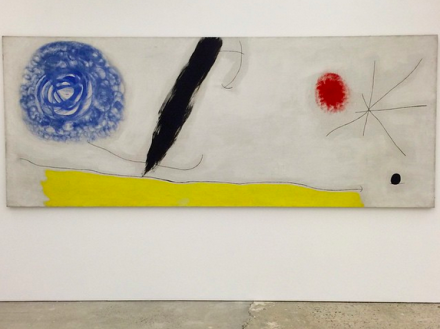
Joan Miró, Bird Woken by the Cry of the Azure Flying Away Across the Breathing Plain (1968), via Art Observed
In another piece, La Marche pénible guidée par l’oiseau flamboyant du désert (The Sorrowful March Guided by the Flamboyant Bird of the desert), the artist’s work moves ever further into states of abstraction, replacing his colorful figures with energetic, loping strokes of black and red, occasionally countered by momentary flicks of the brush or dots of color that unify the various gestural elements, offered enough space to stand on their own while moving towards a strikingly cohesive visual balance. In another, Oiseau dans la nuit (Bird in the Night), the work is dominated by only a few abstract elements, using empty space to emphasize the vibrancy of his few marks.
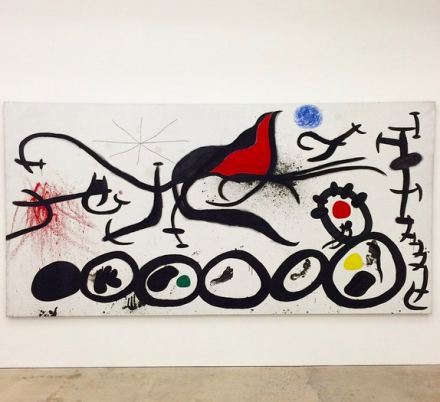
Joan Miró, The Sorrowful March Guided by the Flamboyant Bird of the Desert (1968), via Art Observed
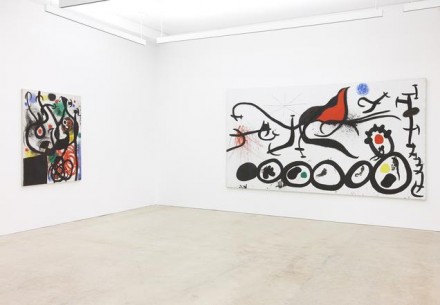
Joan Miró, Oiseaux dans L’Espace (Installation View), via Nahmad Contemporary
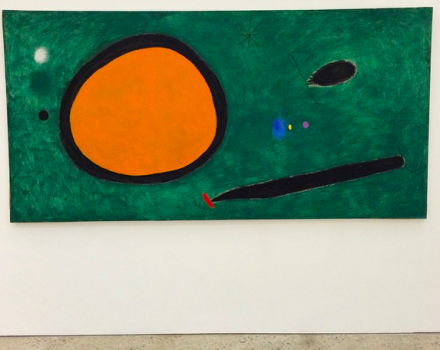
Joan Miró, The Flight of the Bird by Moonlight (1967), via Art Observed
“It showed me the liberties we can take, and how far we could go, beyond the limits. In a sense, it freed me,” Miró is quoted in the exhibition press materials, expressing his strong admiration for the iconoclastic techniques of the post-war American school, and his work here is a fitting indication of his newfound freedom. Taking the bird as his subject and symbol, the works seem to fly free from Miró’s ties to character-focused works, and the the free-floating shapes and masterfully balanced minimalism of the exhibition offer a look at an artist finding his voice anew in the work of his fellow artists.
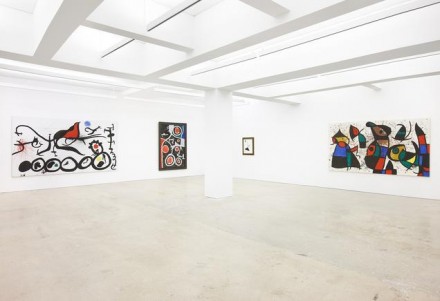
Joan Miró, Oiseaux dans L’Espace (Installation View), via Nahmad Contemporary
— D. Creahan
Read more:
Joan Miró at Nahmad Contemporary [Exhibition Site]



